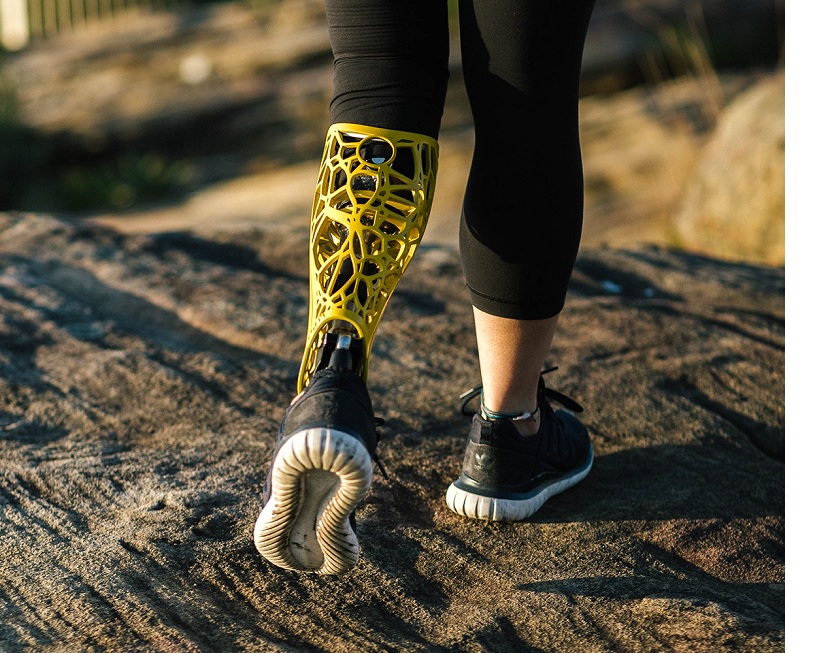by Heath Dragovitch

A recent article in The O&P EDGE posed this question: “As O&P patients are more likely to take pride in their prostheses and are not afraid to show off the bionic look of their prostheses, what role do prosthetic covers play? [Is there] still a place for prosthetic covers?”
I can only speak from my own experience, but I’ve lived with a prosthesis every day for nine years, since the age of 26. I’ve worn them with and without foam covers, I own a 3D-printed cover from Alleles, and I’ve had both flesh-tone and black carbon fiber sockets. I’ve tried both the realistic and the stripped-down bionic look.
I think it’s important to remember that people feel differently from day to day, from hour to hour. Sometimes we want to stand out, and sometimes we don’t. Prosthetic covers made by companies like Alleles and So3cket Socks, which amputees can purchase directly, are, by nature, easily removable and interchangeable, whereas covers put on in a prosthetist’s office are not. That’s true, isn’t it? The stocking over my foam cover was held in place with wide clear tape wrapped several times around the socket, like a garter made of packing tape on a life-size doll’s leg. Clearly, my prosthetist did not intend for me to take it off. Positive media attention may certainly have something to do with amputees drifting away from traditional cosmesis and toward bare metal and 3D-printed covers, as the EDGE article suggested. But that’s not the only reason. If you saw a beige sofa with tape holding it together, covered in stains, snags, and dog hair, would you want it? No, of course not.
I think as long as people continue to wear clothing that is mass produced and designed for symmetrical bodies, there will always be a place for prosthetic covers—at least until the prosthetics industry jumps on the 3D-printing bandwagon and begins designing prostheses that take into account the outer contours of the missing limb. (See the work of industrial designer Scott Summit, for example.) It doesn’t matter how proud someone is of their prosthesis underneath; it’s not a flattering look for one leg of your pants or one sleeve of your shirt to be hanging loose, flapping in the cold wind like a flag.
Dirt and wear and tear are not only issues of hygiene, but aesthetic issues as well, draining away the confidence you hoped to provide with a prosthetic cover. If I were in O&P, I would think harder about the cover materials. Think about it the next time you’re in a bathroom with your thighs resting on a public toilet seat, splashing through a mud puddle, or when a cat uses your leg as a scratching post. Prosthetic covers should either be hard and rugged like an Alleles plastic cover, or soft but washable, inexpensive, and easy to replace, like Socket Socks.
Prosthetists don’t need to bother with everything. They can let companies like Alleles take care of the lower leg, since it’s relatively easy to attach a cover to. The fashion industry can take care of overall style. All we need from prosthetists in the way of appearance are limbs that match the size and shape of our bodies. We can take care of the rest.
Where we need the industry’s expertise most is in custom sockets and joints. No one can do that part but a skilled prosthetist.
Heath Dragovich has been treated by five prosthetists at two companies in the last nine years. He can be contacted at heathdragovich@gmail.com. This essay originally appeared in the May 2022 issue of The O&P EDGE.